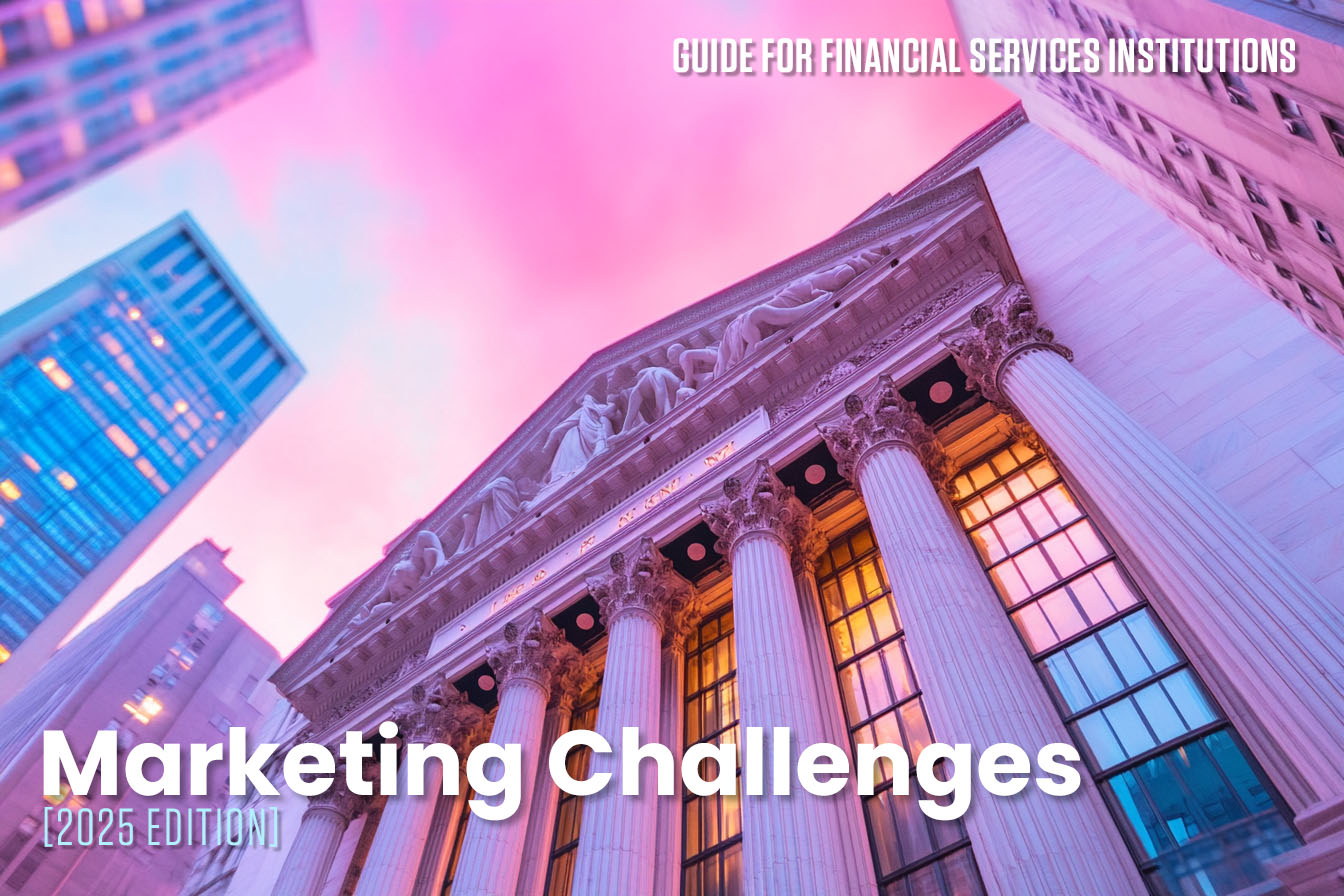
The Top Marketing Problems Facing Financial Institutions in 2025
Read Time: 3 minutesAs financial services marketers approach 2025, numerous issues remain unaddressed or overlooked, despite their potential to shape long-term success. These challenges are not headline-grabbing topics, nor are they likely to trend across industry blogs, but they demand attention to ensure a competitive edge in a sector evolving with increased complexity. Mastering these issues could position your company as a leader in a market that is growing ever more complex and regulated.
GUIDE: Eight Best Marketing Challenges Facing the Financial Services Industry
1. Struggling with Long-Term Brand Identity in a Transactional Environment
![]()
- Problem: Many financial services firms focus heavily on transactional marketing, with campaigns designed to drive immediate sign-ups or account openings. However, this approach often leaves the overall brand identity fragmented and weak, failing to cultivate long-term loyalty. Customers may not associate the brand with anything more than basic financial services.
- Why It’s Overlooked: The emphasis on short-term performance metrics leads to a reliance on campaigns that show immediate ROI, while long-term brand-building efforts are sidelined. Marketers are often pressured to prove their strategies’ impact in quarterly results, leaving little room for cultivating a more cohesive and enduring brand identity.
2. Complexity in Hyper-Personalization Beyond Data Collection
![]()
- Problem: Financial services firms often struggle with creating hyper-personalized experiences that go beyond mere data collection. Most personalization today focuses on basic demographic information, missing the depth required to make interactions genuinely relevant. Customers expect communications to anticipate their needs, yet many financial marketers stop at superficial personalization tactics, such as using a customer’s name or basic transaction history.
- Why It’s Overlooked: The focus on compliance and regulatory constraints in financial marketing often limits creativity. Companies prioritize privacy and data protection, leaving personalization as an afterthought. Marketers also believe that current CRM and marketing automation tools are sufficient, underestimating the growing expectations for deeper, context-aware personalization.
3. Building Trust in a Post-Scandal Era
![]()
- Problem: The financial sector has faced various high-profile scandals, leading to a general erosion of trust. Despite increased regulatory oversight, many customers remain skeptical about financial institutions’ intentions. This skepticism impacts customer acquisition, retention, and brand loyalty in ways that are difficult to measure but significantly affect long-term performance.
- Why It’s Overlooked: Trust-building efforts are often overshadowed by more immediate concerns, such as profit margins and quarterly performance. Financial marketers also tend to assume that compliance and transparency initiatives are enough to rebuild trust, ignoring the emotional component of customer relationships.
4. Fatigue from Digital Overload
![]()
- Problem: Financial services consumers are overwhelmed by digital communications. From email campaigns to social media messages and mobile notifications, the constant barrage of information can lead to disengagement. Many firms have not adequately adjusted their marketing strategies to deal with this digital fatigue, leading to declining engagement rates.
- Why It’s Overlooked: Marketing teams often view increasing digital touchpoints as a net positive, overlooking the cumulative effect of digital fatigue. Additionally, many organizations lack the tools to measure the impact of this fatigue on customer experience and brand perception.
5. Shifting Generational Expectations Around Financial Advice
![]()
- Problem: Younger generations, particularly Millennials and Gen Z, are increasingly skeptical of traditional financial advice models. They favor self-directed investment platforms, online financial education, and peer-to-peer advice forums, leaving traditional advisory services struggling to adapt. Financial marketers are often unprepared to engage with this demographic in a way that resonates with their values and expectations.
- Why It’s Overlooked: Many financial services firms still design their marketing campaigns around a one-size-fits-all approach to financial advice. The assumption is that all generations value the same type of interaction, causing a disconnect with younger audiences who expect more autonomy and transparency.
6. Operational Transparency in Marketing Communications
![]()
- Problem: Consumers are increasingly demanding transparency not only in products but also in how marketing communications are handled. They want clear explanations of fees, product offerings, and even the marketing processes that target them. Financial institutions that fail to offer this transparency risk alienating a more discerning customer base.
- Why It’s Overlooked: Marketers often believe that transparency is solely the responsibility of legal or compliance departments. This results in marketing messages that are too focused on promotional content, missing the opportunity to build rapport through openness about the institution’s operations and policies.
7. Sustainability Messaging Misalignment
![]()
- Problem: Consumers, especially younger ones, are increasingly conscious of the sustainability practices of the businesses they engage with. Financial services firms often struggle to align their messaging with their sustainability practices, either because these initiatives are still in development or because the messaging comes across as disingenuous.
- Why It’s Overlooked: Many financial institutions view sustainability as a secondary concern, focusing on profits and regulatory requirements instead. When sustainability is mentioned, it often feels tacked on rather than integrated into the overall brand narrative. This leaves customers questioning the sincerity of the institution’s commitment to sustainability.
8. Limited Diversity in Marketing Teams
![]()
- Problem: The financial services industry continues to grapple with a lack of diversity in its marketing teams, leading to campaigns that fail to resonate with diverse consumer groups. Without varied perspectives, marketing campaigns often miss the nuances required to engage an increasingly multicultural customer base effectively.
- Why It’s Overlooked: Diversity and inclusion efforts tend to be prioritized in customer-facing roles but are often neglected within marketing departments. As a result, marketing strategies become homogeneous, lacking the cultural relevance needed to connect with all segments of the population.
Get Help Tackling 2025 Financial Services Marketing Challenges
Financial services marketers face a range of issues that go beyond the popular industry trends of digital transformation and regulatory compliance. Tackling these less-discussed but essential challenges—ranging from overcoming digital fatigue to improving trust-building efforts—will differentiate companies that are ready for the future. Addressing these overlooked areas today could enable financial institutions to thrive in an increasingly competitive and skeptical market environment.
GET MARKETING HELP FOR FINANCIAL SERVICES »






